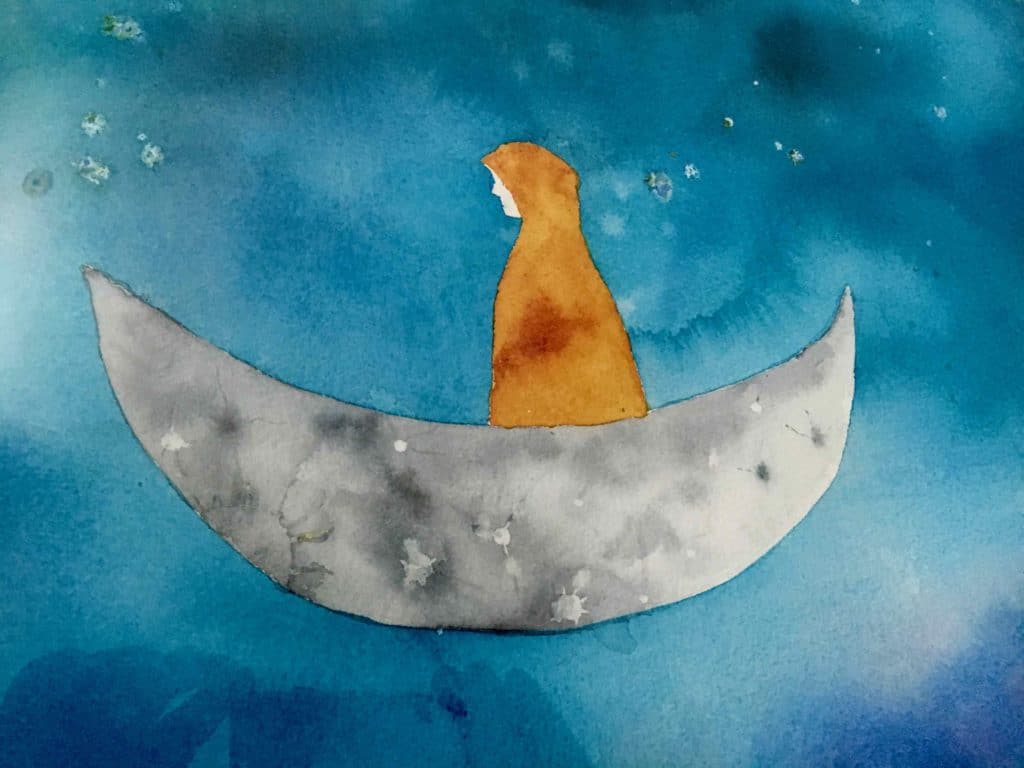
Dreams “wake us up” to something within. They wake us up to a larger capacity for feeling and understanding our life and relationships. Gradually, we learn the language, customs and nature of dreams and dreaming. This is a way of approaching the great mystery of our inner life and how to evolve.
“It’s just a dream!” is a common response to a nightmare. “Yes, it is just a dream. And, that snake that ate me last night was extremely real!”
Some dreams take over the whole personality and we awake as if we are returning from another place. In a dream, we may fall off the edge of a building or meet a being that gives us great kindness and wisdom. What we do with these dreams makes the difference.
Spiritual and Psychological Use of Dreams 
We can better understand dreams as we become aware of how much we actually dream. We have night dreams, day dreams, dreams of the future, dreams of the past, a dream vacation, a dream partner, etc. All are a form of dreaming that can guide us to a deeper quality of mind, body and spirit/soul.
The activity of dreaming is a primary human function of the mind as digestion is to the body. To give value and attention to our dreams provides a similar vitality for the mind and spirit as caring for the body with good food and clean water. The emotional, intellectual and mystical qualities of the mind can expand because we make the unknown parts of ourselves known. These new qualities of our self include both personal awareness, relationship to others and connection to our fundamental nature that religions, science and philosophy have been dreaming about for ages. But instead of borrowing an other’s view of this unknown territory, we experience this unknown within our self and have our own personal experiences and interpretations. Consequently, we live and embody our own life rather than imitating another’s dream for us, theory or science.
“No one who does not know himself can know others. And in each of us there is another whom we do not know. He speaks to us in dreams and tells us how differently he sees us from the way we see ourselves.” C.G. Jung; Collected Works 10, para. 325
For example, a very common dream is being in a big house and exploring different rooms. In a  room we might meet someone or find something surprising or weird. The dream is putting us in a situation to meet or discover what has previously been behind closed doors. “Who or what speaks to us in dreams?” “What is pushing me to wake up to something within my own mind?”
room we might meet someone or find something surprising or weird. The dream is putting us in a situation to meet or discover what has previously been behind closed doors. “Who or what speaks to us in dreams?” “What is pushing me to wake up to something within my own mind?”
Another example: A common day dream is that we can hide ourselves from ourselves. Put aspects of my personality and history in little boxes or little rooms and forget about it. However, we are still living in this house with all these aspects of our personality stuck in these boxy rooms. And something is forcing us to look into these boxes at night. No wonder there are so many sleep problems.
The statement, “It is just a dream” helps a little bit. However, when the fear and helplessness in dreams repeats or sleep becomes a chaotic jumble of feelings, I can’t just blow it off as nothing. It is real to me. It is part of my reality at night. It affects my day. Something wants to be known, heard, seen and contacted. Isn’t that what every child needs and every adult?
When I was a child the dreams were so vivid and real to me that I did not want to go to sleep at night. Now I can relate to those dreams as an adult and value them most dearly because they have led me to me, my family and humanity itself. As a child the only psychology in the neighborhood was “It is just a dream.” Now we can listen to our children’s dreams and value them without judgement or interpretation. Their natural response then lays the foundation for future exploration and interaction with the dream symbols.
Dreams in Therapy 
As a psychotherapist, the dreams that clients bring in take us into conversations that we never would have had without the dream. I do not push for an interpretation or even an insight but just allow the dream to stimulate conversation as we might discuss our reactions to a work of art. The dream may activate memories, associations of all kinds, and a simple inquisitiveness. There is always time for interpretation after we have allowed the dream to work it’s magic on us.
For example: A client remembered a fragment of a dream the other day. She was being chased by someone unknown. It was night time in the dream and she knew she must run. That is all she could remember. The first association the client had was, “Who was I running from?” then “Am I running from a part of myself that I am afraid of?”. Our conversations followed the theme of running away. And the various aspects of her life that seem to be chasing her. One was the avoidance of talking with her partner about topics that could hurt and she felt inadequate to formulate the language. Consequently, the dream led us to her waking life and how to talk about sensitive topics.
“One would do well, therefore, to treat every dream as though it were a totally unknown object. Look at it from all sides, take it in your hand, carry it about with you, let your imagination play round it, and talk about it with other people.” C.G. Jung, Collected Works, (1)
This is the beginning of a series on the spiritual and psychological use of dreams.
Related Links:
Shadow page 2
(1)Jung, C. G. (2014-03-01). The Collected Works of C.G. Jung: Complete Digital Edition (Kindle Locations 128514-128516). Princeton University Press. Kindle Edition.
